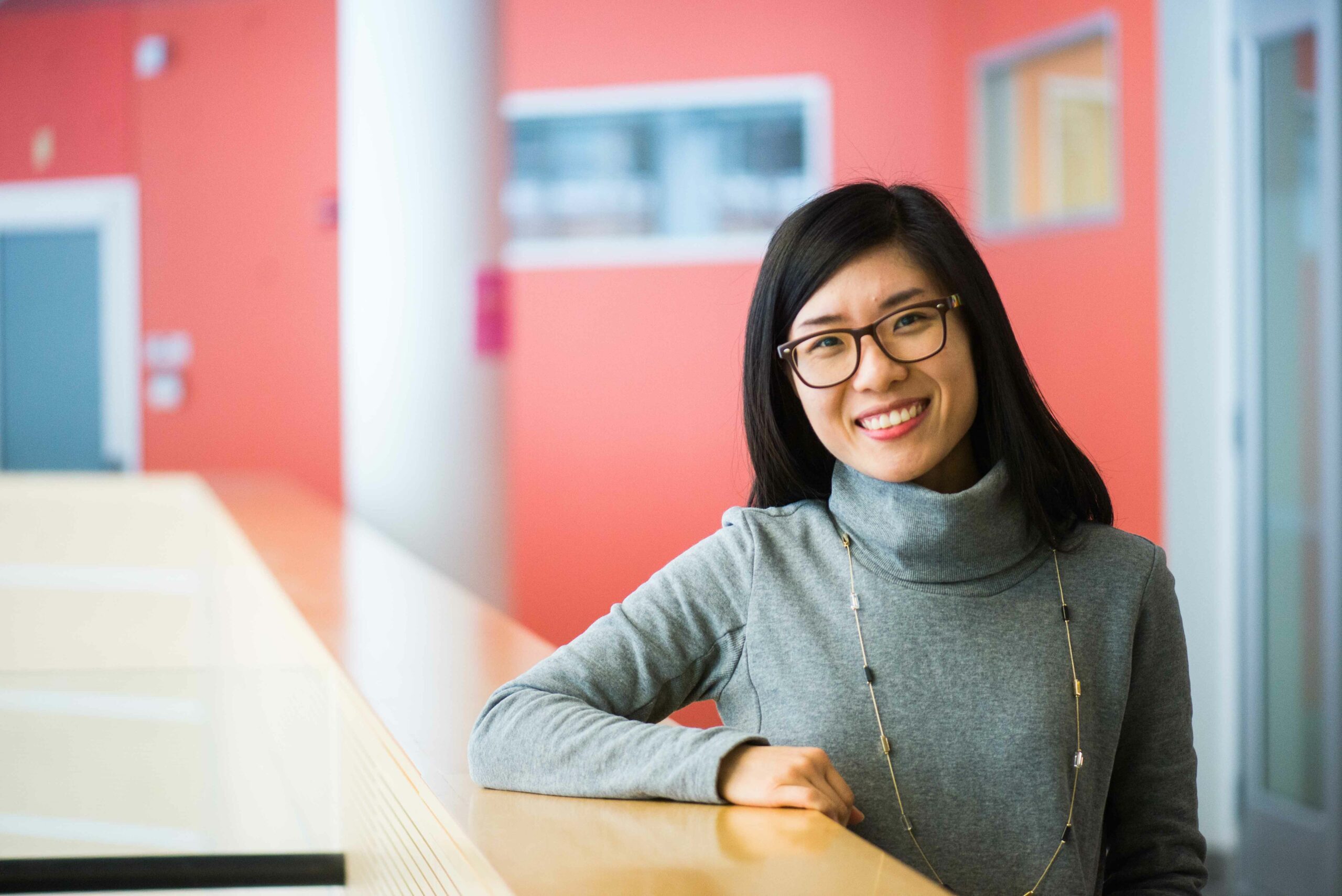Khoury News
PhD Student Yixuan Zhang Uses Data and Visual Analytics to Improve Type 1 Diabetes Care
For many health conditions, especially chronic ones, involving patients in their own care is a vital part of the treatment plan. Following through on medications and a doctor’s advice takes […]

For many health conditions, especially chronic ones, involving patients in their own care is a vital part of the treatment plan. Following through on medications and a doctor’s advice takes commitment, as well as good information and feedback. The responsibility of managing one’s own health is considerable, and care — and health — improve when patients have access to data-driven technological solutions tailored to an illness or health event.
This is where Yixuan Zhang, who goes by the name of Janice, comes in. She is a second-year Ph.D. student studying Personal Health Informatics, an interdisciplinary program between Khoury College of Computer and Information Sciences and Bouvé College of Health Sciences. The field involves tracking behaviors like diet, sleep, and blood glucose as well as health outcomes to help patients self-monitor and make adjustments. Janice was drawn to it because she finds it to be a promising field that still has a lot of room for problem solving, innovation, and interdisciplinary collaboration.
During her first year, Janice’s main project was developing interactive tools to help visualize and adjust Type 1 diabetes (T1D) management plans. People with T1D don’t produce insulin in the pancreas and therefore must inject insulin, whereas people with Type 2 diabetes may produce some insulin yet struggle with insulin resistance or other health challenges, like body weight and nutrition. She worked closely with Khoury College Assistant Professor Cody Dunne, whose work focuses on information visualization and human-computer interaction, to develop a tool, called IDMVis, that integrates many different kinds of diabetes data in a visual display so that doctors can help patients adjust their behaviors accordingly. The two had a paper on the diabetes management tool accepted in IEEEVis, a conference hosted by the Institute of Electrical and Electronics Engineers that bills itself as the “premier forum for advances in theory, methods, and applications of visualization and visual analytics.” (Note: there is a video demo of IDMVis and more information at https://github.com/VisDunneRight/IDMVis/.)
IDMVis is already being implemented for clinicians, and their response is positive. “Through a qualitative evaluation with diabetes clinicians, they found that our tool helped them make diabetes management treatment plans for patients,” Janice reports. “They were able to identify issues of data quality such as missing or conflicting data, reconstruct patient records when data is missing, differentiate between days with different patterns, and promote educational interventions after identifying discrepancies.”
Better, cleaner data means that doctors can tailor treatment and recommend changes more specific to the individual patient. That can improve not just treatment, but preventative care. Janice finds herself drawn to the kind of impact she can have here. “Millions of people with Type 1 are kids,” she says. “Hopefully, I can contribute to this domain to help them.”
Janice has found her time at Khoury College very helpful in developing this project, particularly from the Human-Computer Interaction course taught by Assistant Professor Andrea Parker. “Inspired by the concept of Hierarchical Task Analysis (a way of breaking down tasks into smaller, simpler tasks) that I learned from Andrea’s HCI class and visualization task abstraction from the information visualization course, I developed a new method to perform task analysis and task abstraction, namely Hierarchical Task Abstraction (a way of breaking down tasks across different domains so that they can be visualized more easily). This was later turned into one of the contributions to our IEEEVis paper.”
More recently, Janice has been focusing on two projects: using technology to help families manage diet-related diseases and improving emergency evacuation for the elderly. Both projects are still in their early stages. She begins field work on the emergency evacuation project at Andover Senior Center in the spring, in collaboration with Professor Miso Kim in the Department of Arts and Design, and Jacqueline Griffin in the Department of Mechanical & Industrial Engineering.
Among the three projects—family nutrition, elderly evacuation, and T1D management tools—Janice says it is hard to pick a favorite. She gets her ideas from everywhere, including photography, a passion.
“(Cross-disciplinary work) pushes me to learn new things, and helps me broaden my horizon,” she said. “I like the feeling of thinking like a designer, thinking like an artist, thinking like a computer scientist… It is challenging, but it has (been) a lot of fun!”